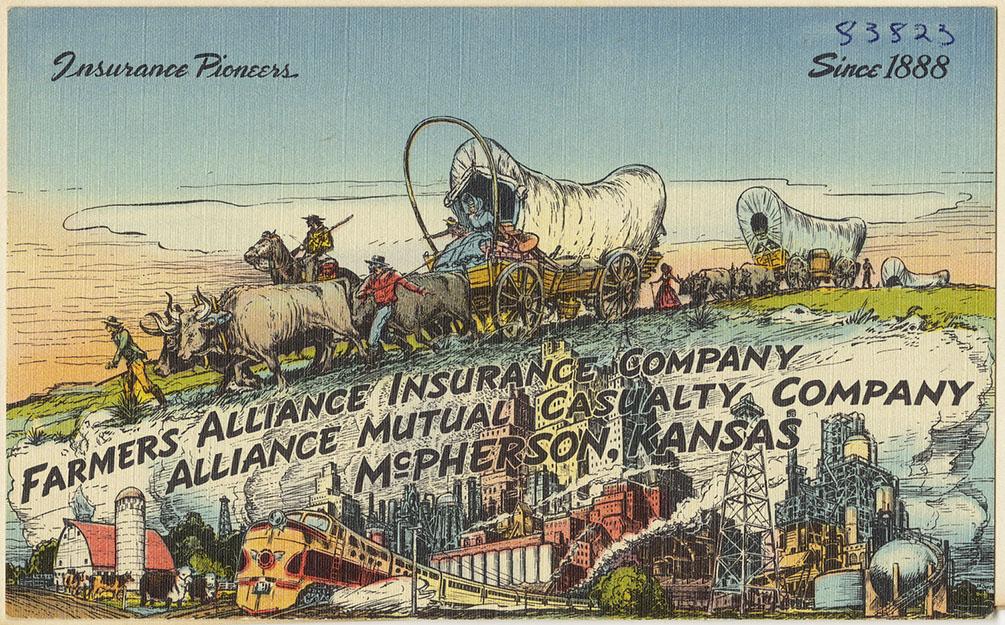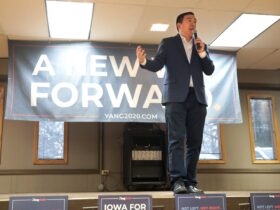It is almost easy to forget that the Bernie Sanders campaign loudly premised its success on galvanizing a mass working-class movement. However, in what feels like a contemporary adaptation of Les Miserables, Sanders campaign workers managed to get the students to the barricades, but the workers did not join them, and the revolution was defeated. Vainglorious survivors declared victory on the battlefield of ideas, and have promised future success through subsequent organizing. While they may in fact be able to cultivate a coalition capable of winning elections, one thing is for sure— it will not be a mass working-class movement.
Organizations that require ideological consensus for entry always struggle to attract broad working-class participation. The same can be said for partisan political activism. By operating as enlightened interlopers, organizers drop into working-class spaces and inject them with their politics and culture in much the same way that settlement house progressives of the late-19th, early-20th century once did.
But are there other options? We know by historical precedent that organizations with a universalist approach can bring people together on the basis of their shared class interest; take, for instance, the twin cases of the Farmers’ Alliance and the Southern Christian Leadership Conference. Once formed, class politics were created by members’ easily recognized or assumed mutual interests and needs.
Organizations that require ideological consensus for entry always struggle to attract broad working-class participation.
The Farmers’ Alliance began as a professional association for Midwest and southern farmers. Less than two decades later, it would grow into its own political party, staunchly opposing monied interests and challenging the political dominance of both Democrats and Republicans while nearly bridging post-Civil War racial tensions in the south.
In the 1870s three independent organizations—the National Farmers’ Alliance, made up of Midwest farmers; the National Farmers’ Alliance and Industrial Union, made up of southern whites; and the Colored Farmers’ National Alliance and Cooperative Union for southern blacks—were collectively known as the Farmers’ Alliance. While the organizations had their own regional concerns, they all focused on the pressures farmers faced from the purchasing, supply, finance, and transport systems in American agriculture. Committed to addressing these issues in a non-partisan fashion, the Farmers’ Alliance created a nationwide political education network and embarked on a number of cooperative ventures—from mills to general stores—to combat predatory pricing and help indebted farmers bring their goods to market. These forays were met with varying degrees of success; however, the overall failure of the coops to make a substantial difference convinced the Alliances to enter the political arena.
After the Democratic Party refused to adopt their land-loan program, the Farmers’ Alliance formed the People’s Party in 1891: the first major political party with a nationally consistent platform. People’s Party candidates won a number of elections in the Midwest and united former Confederates and their former slaves—each composing the memberships of the two southern Farmers’ Alliances—in a common political cause. Georgia gubernatorial candidate Tom Watson attracted multiracial crowds with his class-oriented message:
You are made to hate each other because on that hatred is rested the keystone of the arch of financial despotism which enslaves you both. You are deceived and blinded because you do not see how this race antagonism perpetuates a monetary system that beggars you both. The colored tenant is in the same boat as the white tenant, the colored laborer with the white laborer and that the accident of color can make no difference in the interests of farmers, croppers and laborers.
In the aftermath of a civil war to end slavery, the sectarian divide between whites and blacks was overcome almost long enough to overthrow southern capital. This effort was ultimately quashed through the violent and electorally fraudulent imposition of Jim Crow.
Going back through centuries of slavery, spirituality was one of the few ways slaves maintained social cohesion. After emancipation, one of the first expressions of freedom by the former slaves was the establishment of independent black churches. Through the assistance and funding of missionaries, these churches grew to be a vital driver behind increasing African American literacy—from 5% in 1870 to 70% in 1900. In the 20th century, the church continued to function as an important hub of the southern African American community, and became a focal point of resistance to Jim Crow. Despite not being politically ideological in any explicit fashion, the church drove southern African American politics by being a key organizer for civil rights.
One of the first and most important undertakings of this new Civil Rights Movement was the Montgomery Bus Boycott—organized by the Montgomery Improvement Association and headed, tellingly, by the Reverends Martin Luther King Jr. and L. Roy Bennett. The boycott’s success spurred the creation of the Southern Christian Leadership Conference, which a few years later would expand its mission to create jobs with Operation Breadbasket in Atlanta, and the universal working-class Poor People’s Campaign.
Martin Luther King Jr.’s assassination meant that the Poor People’s Campaign could never fully materialize, but the political progression of the SCLC reinforces the same lessons learned from the Farmers’ Alliances. In both cases, working-class Americans gathered in voluntary associations which were neither political nor ideological in their origin, yet resulted in the formation of genuine class politics with their own intellectual and political leadership. These politics grew into movements around cooperative action. For the Farmers’ Alliances, this meant a full-blown political party, and for the SCLC, the evolution of a class politics as the status and interests of black churchgoers changed.
Over the course of the 19th century, America’s cities had become fetid morasses of squalor led by corrupt political machines. Urban populations in the north and west had exploded due to a mass influx of immigrants from Europe and African American migrants from the Jim Crow south, heightening tensions and birthing a different sort of politics. This was best exemplified by the settlement house movement, wherein university students, middle class philanthropists, and other members of the privileged class took up residence in some of America’s poorest neighborhoods as pioneers. These settlers were often in search of perspective and inspiration, endeavoring to befriend their impoverished neighbors and educate them in superior culture and values by organizing games, clubs, and educational and social activities, or anything else they believed the neighborhood was lacking.
Others turned to advocacy journalism. Muckrakers like Lincoln Steffens exposed graft and crime in political machines. Ida Tarbell railed against the thuggish tactics that created and maintained the Standard Oil monopoly. Jacob Riis entranced middle-class audiences with slideshows of New York City slums. Faced with his sermons, audience members were known to audibly moan and faint. Many more donated to his efforts to clean the cities by destroying tenement houses.
The crucible of observing, interacting with, and organizing the poor created a vanguard of righteous reformers who sought to fight on behalf of the less fortunate. Among them was Jane Addams, a leading figure in ending child labor and attaining women’s suffrage. She described the settlement houses as “an attempt to relieve… the overaccumulation at one end of society and the destitution at the other” and that, “this overaccumulation and destitution is most sorely felt in the things that pertain to social and educational privileges.”
In other words, the poor were poor as a result of a deficit of privilege and access created by the greed of big business and corrupt political machines. For Addams and other new progressives, this was best alleviated through programs like public kindergarten, improved healthcare, and professional licensing to root out fraud.
All good things, but it is worth emphasizing that such reforms did not come from a working class determining its own needs and priorities and asserting its political power. Rather, they were the political product of college-educated urbanites gazing aghast at social problems: in essence, middle class pity politics.
Today’s left shares many characteristics with the settlement house movement. The Democratic Socialists of America—the largest left organization in the country—is composed primarily of young, educated, upper-middle class urbanites. But aside from troubling demographics, the DSA and other progressive organizations suffer most from being explicit ideological projects. This creates a situation that is inherently exclusionary; one must already be politically engaged and in sync with the existing program to be accepted as a member—a high bar for most people, and arguably higher for working class people. The only politics that could conceivably result from such circumstances would revolve around the concerns and priorities of the bourgeoisie—those educated middle-class interlopers.
One of the most frequently proposed solutions is to aggressively organize labor again. But unions have largely been crushed, and organizing efforts are easily smothered in their infancy. To make matters worse, the left’s tactics have been pitifully ineffective.
Organizing churches is likewise not much of an option, as congregation membership has plummeted sharply in the last two decades. By and large, people rarely congregate in social spaces at all anymore (even before the COVID-19 pandemic).
The bottom line is that if there is ever going to be a real working-class movement in this country, the members of that class must be in the same room together. The non-ideological organizing done by the Farmers’ Alliances in the 19th century and black churches in the 1960s should be considered as models. They fulfilled the true promise of class politics, showing that people can set aside their social and cultural affinities if organizations speak exclusively to their one commonality.
Until this happens, any political revolution, even one that wins elections, will be revolutionary in name only.









